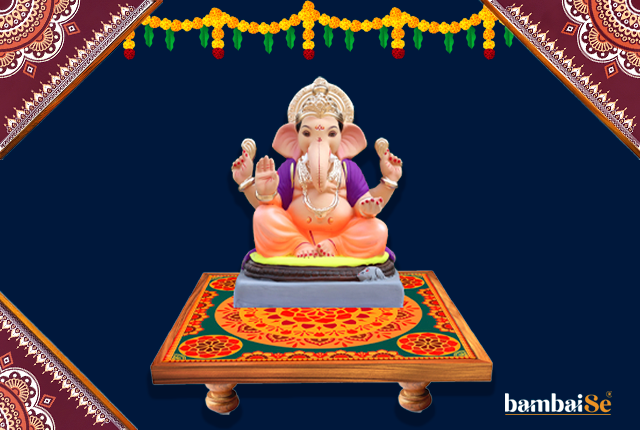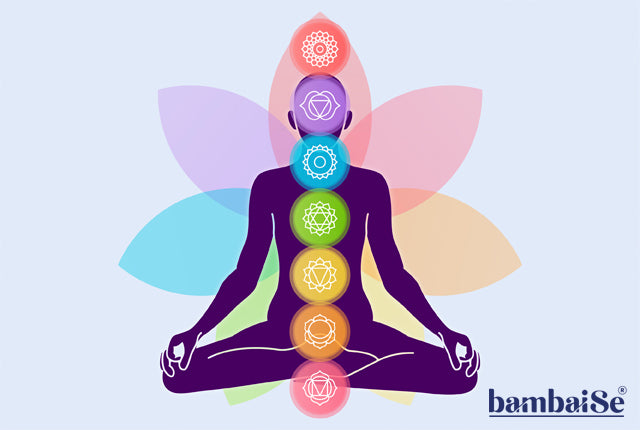Introduction to : The Sacred Bajot: Heart of Ganesh Festival Celebrations
Ganesh Festival, or Ganesh Chaturthi, is an exciting time in India when people come together to celebrate the elephant-headed god, Lord Ganesha. One of the most important elements of this celebration is the "Bajot" or "Chowki." In this blog, we'll explore why the Bajot is essential during the Ganesh Festival and how it can add a touch of tradition and beauty to your home decor.

The Bajot's Spiritual Significance
A Seat of Honor for the Divine: The Bajot holds a sacred position during the Ganpati Festival as it serves as the designated seat for Lord Ganesha. When the idol of Lord Ganesha is carefully placed on the Bajot, it is symbolic of his divine presence among his devotees. This act represents a warm and respectful welcome to the deity, emphasizing the belief that Lord Ganesha graces the devotees' homes during this auspicious time.
Central Hub for Worship: The Bajot takes on the role of a spiritual hub during the festival. It is the focal point where devotees come together to perform various rituals and offer their heartfelt prayers to Lord Ganesha. The rituals conducted around the Bajot include the aarti, a ceremony involving the offering of light to the deity, and the chanting of sacred hymns and mantras. Additionally, the Bajot serves as the platform for presenting offerings such as fresh flowers, delicious sweets, fruits, and fragrant incense. These offerings symbolize the devotees' deep respect and devotion.
An Artistic Expression of Faith: The Bajot is not merely a functional platform; it is also a canvas for artistic expression. Many devotees and artisans take great care in designing and decorating the Bajot. These adornments often include vibrant and colorful cloth, intricate rangoli patterns made from colored powders, and beautifully arranged flowers. This visual splendor enhances the festive ambiance and creates an inviting atmosphere for Lord Ganesha's presence.
Cultural Significance of the Bajot
Cultural Heritage: The use of the Bajot during the Ganpati Festival is deeply intertwined with India's cultural heritage. It reflects the country's rich traditions and customs, highlighting the enduring importance of rituals in the lives of its people. The Bajot's presence reminds devotees of their cultural roots and serves as a means to pass down these cherished traditions from one generation to the next.
Time-Honored Practices: The practice of using the Bajot during the Ganpati Festival has been passed down through generations. It exemplifies the continuity of cultural practices and the enduring significance of customs in contemporary society. As a result, the Bajot is not just a piece of furniture but a tangible link to India's rich cultural tapestry.
Beyond the Festival: The Bajot's Role in Home Decor
While the Bajot plays a pivotal role during the Ganpati Festival, its significance extends beyond the festivities. It can be integrated into home decor to add a touch of tradition and elegance throughout the year.
Versatile Decor: Bajots come in various sizes, designs, and materials, making them versatile additions to home decor. A small Bajot can be employed as a charming side table, while a larger one can serve as a distinctive coffee table. Their unique aesthetics can imbue any room with character and cultural depth.
Artistic Displays: The low height of the Bajot makes it an ideal platform for showcasing artistic pieces, sculptures, or decorative items. It allows for eye-catching displays without overwhelming the visual space. This use of the Bajot can transform it into a piece of functional art within the home.
Cultural Fusion: Combining the Bajot with modern furniture creates a beautiful fusion of cultures in interior design. It represents a harmonious blend of tradition and contemporary aesthetics, making it a conversation starter and a testament to one's appreciation of cultural diversity.
Conclusion
The Bajot is more than just a piece of furniture; it's a symbol of tradition, respect, and community during the Ganesh Festival. By incorporating the Bajot into your home decor, you can infuse your living spaces with the beauty and rich cultural heritage of India. Whether you use it as a decorative piece, a functional table, or a symbol of unity, the Bajot can truly be the heart of your home decor, celebrating the spirit of Ganesh Festival throughout the year.





Leave a comment
This site is protected by hCaptcha and the hCaptcha Privacy Policy and Terms of Service apply.